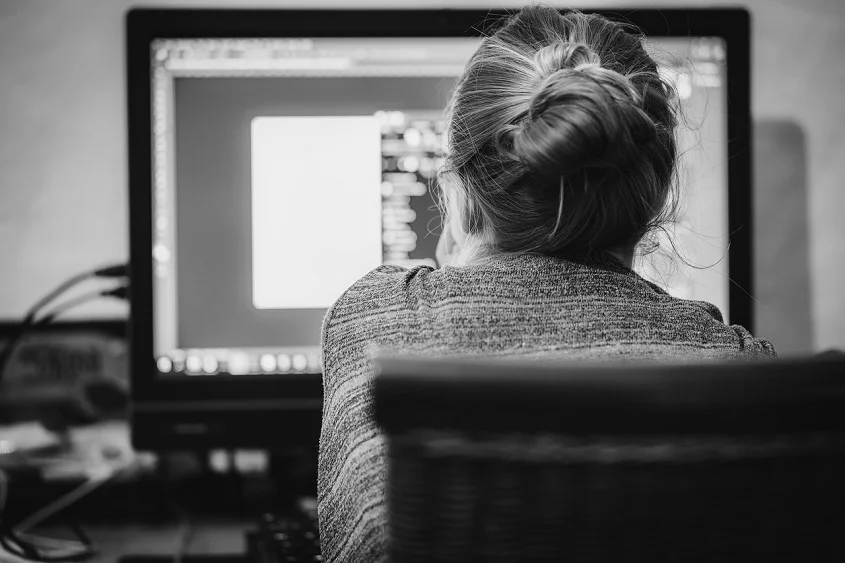Exploring Different Types of Shading in a Patent Drawing
- January 30, 2024
- By Sarita Thomas
- Read 16 minutes
Shading plays a crucial role in patent drawings as it helps to provide depth and dimension to the depicted object. By using different shading techniques, patent drawings can effectively communicate the three-dimensional aspects of an invention. There are several types of shading techniques commonly used in patent drawings, including hatching, cross-hatching, and contour shading.
Hatching is a shading technique that involves the use of parallel lines to create the illusion of shading. The lines are drawn close together to create a darker area and further apart to create a lighter area. This technique is commonly used to depict solid objects in patent drawings.
Cross-hatching is a shading technique that involves the use of intersecting parallel lines to create shading. By varying the angle and spacing of the lines, different levels of shading can be achieved. Cross-hatching is often used to depict textured or patterned surfaces.
Contour shading is a shading technique that involves the use of curved lines to create shading. The lines follow the contours of the object, highlighting its three-dimensional form. This technique is commonly used to depict curved or irregular surfaces in patent drawings.
In conclusion, shading is an important element in patent drawings as it helps to convey the three-dimensional aspects of an invention. By using different shading techniques such as hatching, cross-hatching, and contour shading, patent drawings can effectively communicate the depth and dimension of the depicted object.
Importance of shading in patent drawings
Shading plays a crucial role in patent drawings as it helps to enhance the visual representation of the invention. By strategically adding shading, the three-dimensional nature of the invention can be effectively communicated. Shading provides depth and dimension to the various components of the invention, making it easier for the viewer to understand its structure and functionality.
Moreover, shading also helps to differentiate between different parts of the invention, highlighting their individual features and characteristics. It allows the viewer to distinguish between solid and hollow areas, different materials, and various surface textures. This level of detail provided by shading is essential for accurately depicting the invention and conveying its unique aspects.
In addition to improving the visual appeal and comprehensibility of the patent drawings, shading also serves a practical purpose. It can help in emphasizing specific elements or aspects of the invention that are crucial for its operation or functionality. By selectively shading certain areas, the inventor can draw attention to the key features of the invention, making it easier for the examiner or reader to grasp its innovative aspects.
Overall, shading is an integral part of patent drawings as it enhances their overall quality, improves understanding, and effectively communicates the unique features of the invention. It is important for inventors and patent professionals to pay attention to shading techniques and utilize them strategically to create accurate and visually appealing drawings that support the patent application process.
Purpose of shading in patent drawings
Shading is an important element in patent drawings as it helps to enhance the visual representation of the invention. The purpose of shading in patent drawings is to provide depth and dimension to the various components of the invention. By using shading techniques, the different parts of the invention can be distinguished and highlighted, making it easier for the reader to understand the structure and functionality of the invention. Shading also helps to create a sense of realism in the drawing, making it more visually appealing. Moreover, shading can be used to indicate different materials or textures used in the invention. For example, a shaded area could represent a metallic component, while an unshaded area could represent a plastic component. Overall, shading plays a crucial role in patent drawings by improving clarity, readability, and visual aesthetics.
Types of Shading Techniques
Hatching
Hatching is a shading technique commonly used in patent drawings to represent areas of solid or opaque surfaces. It involves the use of closely spaced parallel lines to create the illusion of depth and texture. Hatching can be applied in different directions and densities to convey various properties of the object being depicted. For example, horizontal hatching is often used to represent flat or smooth surfaces, while vertical hatching can indicate curved or cylindrical shapes. Diagonal hatching is commonly used to represent inclined or sloping surfaces. The density of the hatching lines can also be varied to indicate different levels of shading or shadowing. Hatching is a versatile shading technique that allows patent drawings to effectively communicate the shape and form of an invention, enhancing the clarity and understanding of the visual representation.
Cross-hatching
Cross-hatching is a shading technique commonly used in patent drawings to create depth and dimension. It involves drawing a series of parallel lines in one direction and then drawing another set of parallel lines that intersect the first set at an angle. The resulting pattern of intersecting lines creates areas of darker shading, giving the drawing a three-dimensional appearance.
Cross-hatching is particularly effective in representing different materials and textures in a patent drawing. By varying the density and spacing of the lines, different levels of shading can be achieved, allowing the viewer to distinguish between different elements in the drawing.
In addition to creating depth and dimension, cross-hatching can also be used to indicate specific features or areas of interest in a patent drawing. By applying cross-hatching to certain areas or objects, the drafter can draw attention to those elements and highlight their importance.
Overall, cross-hatching is a versatile shading technique that adds visual interest and clarity to patent drawings. It allows for the representation of various materials, textures, and features, enhancing the understanding and interpretation of the invention being depicted.
Stippling
Stippling is a shading technique commonly used in patent drawings to create a sense of depth and texture. It involves the use of small dots or dashes to simulate shading and create tonal variations. Stippling can be done by hand or with the help of computer software, depending on the preference and skill of the illustrator.
One of the advantages of stippling is its ability to convey a high level of detail. By varying the density and size of the dots, an illustrator can create different shades and textures, making the drawing more visually appealing and informative.
Stippling is often used in patent drawings to depict materials with a rough or textured surface, such as fabric, wood, or metal. It can also be used to show areas of shadow or highlight, adding depth and dimension to the drawing.
In addition to its aesthetic value, stippling can also serve a practical purpose in patent drawings. It can help clarify the structure or function of an invention by highlighting important features or indicating areas of interest.
Overall, stippling is a versatile shading technique that adds depth, texture, and clarity to patent drawings. Its use can enhance the visual representation of an invention and aid in the understanding of its design and functionality.
Applications of Shading in Patent Drawings
Enhancing three-dimensional representation
In patent drawings, the use of shading techniques plays a crucial role in enhancing the three-dimensional representation of an invention. Shading helps to create depth and dimensionality, allowing viewers to better understand the structure and functionality of the invention. There are different types of shading techniques that can be employed in patent drawings, each with its own advantages and applications.
One commonly used shading technique is hatching, which involves the use of parallel lines to create shading effects. Hatching can be used to represent different materials or textures, such as metal, fabric, or wood. By varying the density and direction of the lines, hatching can effectively convey the shape and form of the invention.
Another shading technique is cross-hatching, which involves the use of intersecting lines to create shading effects. Cross-hatching is often used to represent curved surfaces or areas with complex shading patterns. By adjusting the spacing and angle of the lines, cross-hatching can add depth and realism to the patent drawing.
Additionally, gradient shading can be used to create smooth transitions between light and dark areas. Gradient shading is particularly useful for representing smooth surfaces or objects with subtle variations in shading. By blending different shades of gray or color, gradient shading can create a realistic and visually appealing representation of the invention.
Furthermore, stippling is a shading technique that involves the use of small dots or stipple marks to create shading effects. Stippling can be used to represent textures or areas with fine details, such as rough surfaces or intricate patterns. By varying the density and size of the dots, stippling can add depth and texture to the patent drawing.
Overall, the use of shading techniques in patent drawings is essential for enhancing the three-dimensional representation of an invention. Whether it’s through hatching, cross-hatching, gradient shading, or stippling, each technique offers unique advantages in conveying the shape, form, and texture of the invention to viewers.
Differentiating between different parts
When examining a patent drawing, it is important to be able to differentiate between the various parts and elements depicted. This is especially crucial when analyzing the shading used in the drawing. Shading is often employed to provide depth and dimension to the drawing, making it easier to understand the different components. There are several types of shading techniques that can be used, each serving a specific purpose.
One common shading technique is cross-hatching, which involves the use of intersecting lines to create a pattern of shadows. Cross-hatching can be used to indicate different materials or textures in the drawing, as well as to create the illusion of depth.
Another shading technique is contour shading, which involves using curved lines to outline the shape of an object or element. Contour shading helps to define the form and structure of the part, making it more visually appealing and easier to comprehend.
Gradient shading is another commonly used technique, where the intensity of the shading gradually changes from light to dark or vice versa. This technique is often used to create a sense of volume and three-dimensionality.
It is important to note that the choice of shading technique can vary depending on the specific requirements of the patent drawing. The shading should be clear and consistent, allowing the viewer to easily distinguish between the different parts and understand their relationships. By carefully selecting and applying the appropriate shading techniques, the patent drawing can effectively communicate the invention or design in a visually appealing and informative manner.
Highlighting important features
In a patent drawing, it is crucial to highlight the important features of the invention. This helps the reader understand the unique aspects of the invention and its functionality. One way to achieve this is through shading. Shading can be used to create contrast and draw attention to specific areas of the drawing. There are different types of shading techniques that can be employed, depending on the desired effect. Hatching is a common shading technique where parallel lines are drawn close together to create the illusion of shadow or texture. Another technique is cross-hatching, where the parallel lines are crossed over each other to create a denser shading effect. Stippling is another shading technique that involves creating patterns of small dots to add texture and depth to the drawing. These shading techniques can be used individually or in combination to highlight different features of the invention. It is important to use shading sparingly and strategically, as excessive shading can make the drawing cluttered and difficult to interpret. By carefully selecting and applying shading techniques, patent drawings can effectively highlight the important features of the invention and enhance the overall understanding of the invention for the reader.
Best Practices for Shading in Patent Drawings
Consistency in shading techniques
Consistency in shading techniques is crucial in patent drawings as it ensures clarity and uniformity throughout the document. Shading is used to provide depth and dimension to the drawings, making them more visually appealing and easier to understand. There are different types of shading techniques that can be used in patent drawings, including hatching, cross-hatching, and stippling.
- Hatching involves drawing parallel lines in the same direction to create shading. The spacing and thickness of the lines can be adjusted to achieve different levels of shading.
- Cross-hatching is similar to hatching but involves drawing intersecting lines to create shading. This technique can be used to achieve more complex shading effects.
- Stippling involves creating shading by using small dots or dots of varying sizes. This technique can be time-consuming but can produce detailed and realistic shading.
It is important to maintain consistency in the chosen shading technique throughout the patent drawings. This ensures that the drawings are visually coherent and that the shading accurately represents the intended objects or surfaces. Inconsistencies in shading can lead to confusion and misinterpretation of the drawings, which may affect the validity of the patent. Therefore, patent illustrators should carefully select and apply shading techniques, ensuring that they are consistent across all drawings in the patent document.
Using appropriate shading density
When creating a patent drawing, it is important to use appropriate shading density to effectively convey the desired information. Shading can be used to show different areas or components of an invention, highlight specific features, or indicate depth and dimension. Proper shading density helps to distinguish between different objects or elements in the drawing, making it easier for patent examiners and others to understand the invention.
There are different types of shading density that can be used in patent drawings. These include:
Solid shading: This is the densest type of shading, where the entire area is filled with solid lines or patterns. Solid shading is commonly used to represent solid or opaque objects, such as walls, surfaces, or components.
Graduated shading: This type of shading involves varying the density of the lines or patterns to create a gradual transition from light to dark. Graduated shading is often used to depict objects with curved or rounded surfaces.
Hatch shading: Hatch shading involves using parallel lines or patterns to create the illusion of shading. This technique is commonly used to represent transparent or translucent objects, such as glass, liquids, or gases.
Crosshatch shading: Crosshatch shading is similar to hatch shading but involves using intersecting lines or patterns to create shading. It is often used to represent textured or rough surfaces, such as fabrics, wood, or metal.
When choosing the appropriate shading density, it is important to consider the level of detail required and the specific features of the invention that need to be highlighted. The shading should be clear and consistent throughout the drawing, ensuring that it enhances the overall understanding of the invention. By using appropriate shading density, patent drawings can effectively communicate the unique aspects of an invention and support the patent application process.
Avoiding excessive shading
Excessive shading in a patent drawing can have negative implications on the clarity and understanding of the invention. It is important to strike a balance between providing enough shading to highlight the important features of the invention and avoiding excessive shading that may obscure or confuse the reader. Too much shading can make the drawing appear cluttered and may even lead to misinterpretation of the invention. On the other hand, insufficient shading may fail to adequately convey the intended information. To avoid excessive shading, patent drafters should consider the following guidelines:
Use shading sparingly: Only shade the necessary areas that are essential for understanding the invention. Avoid shading non-essential elements or areas that do not contribute to the understanding of the invention.
Maintain consistency: Ensure that the shading style and intensity remain consistent throughout the drawings. Inconsistencies in shading can cause confusion and make the drawings appear unprofessional.
Provide clear legends: Include clear legends or labels to indicate the purpose and significance of shaded areas. This will help the reader easily interpret the drawing and understand the specific features being highlighted.
Seek feedback: Before finalizing the shading in a patent drawing, it is advisable to seek feedback from experts or colleagues. They can provide valuable insights and suggestions for improving the clarity and effectiveness of the shading.
By following these guidelines, patent drafters can create patent drawings with shading that enhances the understanding of the invention without overwhelming or confusing the reader.
Summary of the importance of shading in patent drawings
Shading plays a crucial role in patent drawings as it helps to provide depth, dimension, and clarity to the depicted invention. Shading is used to create contrast and highlight different parts of the invention, making it easier for the examiner and the reader to understand the details. By using shading techniques such as cross-hatching, stippling, or contour shading, the inventor can effectively communicate the shape, texture, and structure of the invention. Moreover, shading helps to differentiate between different materials or components, which is essential for accurate interpretation. Additionally, shading can also enhance the visual appeal of the patent drawing, making it more engaging and visually appealing. Overall, proper shading in patent drawings is crucial for ensuring accurate interpretation, facilitating understanding, and enhancing the overall quality of the patent application.
Tips for effective shading
Shading is an important technique used in patent drawings to provide depth and dimension. Proper shading can enhance the visual appeal of a drawing and make it easier for the viewer to understand the invention. Here are some tips for effective shading:
Use consistent light source: When shading a patent drawing, it is important to establish a consistent light source. This helps create realistic shadows and highlights, adding depth to the drawing.
Gradual shading: Instead of using harsh lines, try to achieve a gradual transition from light to dark areas. This can be done by using techniques such as cross-hatching or stippling.
Consider the material: Different materials may require different shading techniques. For example, shading a metallic object would be different from shading a fabric. Take into account the material properties and adjust the shading accordingly.
Practice and observe: Shading is a skill that improves with practice. Observe real-life objects and study how light interacts with them. This will help you understand shading techniques better.
By following these tips, you can create patent drawings with effective shading that enhance the overall quality and clarity of your invention.
Future trends in shading techniques
Shading techniques in patent drawings have come a long way, and as technology continues to advance, we can expect to see even more innovative approaches in the future. Here are some future trends to watch out for:
Digital shading: With the increasing use of digital tools in the patent drawing process, it is likely that shading techniques will become more digitally focused. This could include the use of advanced software and tools to create realistic and precise shading effects.
3D shading: As 3D printing and modeling become more accessible, we can expect to see shading techniques that take advantage of the three-dimensional nature of objects. This could involve using shading techniques to create depth and dimension in patent drawings.
Interactive shading: With the rise of interactive technologies, such as augmented reality and virtual reality, it is possible that shading techniques in patent drawings will become more interactive. This could include the ability to manipulate and explore shading effects in real-time.
Sustainable shading: As sustainability becomes an increasingly important consideration in all aspects of design, it is likely that shading techniques in patent drawings will also evolve to be more sustainable. This could involve the use of shading techniques that minimize energy consumption or reduce the environmental impact.
In conclusion, the future of shading techniques in patent drawings looks promising. With advancements in technology and a growing focus on sustainability, we can expect to see more innovative and environmentally-friendly approaches in the years to come.
Sarita Thomas
Latest Blogs
Blog Categories
- Intellectual Property (IP) Strategy (84)
- Intellectual Property Asset Management (IPAM) (17)
- IP Monetization (4)
- IP News (7)
- Patent Drafting (2)
- Patent Litigation (6)
- Patent Prosecution (8)
- Patenting (18)









No comment yet, add your voice below!